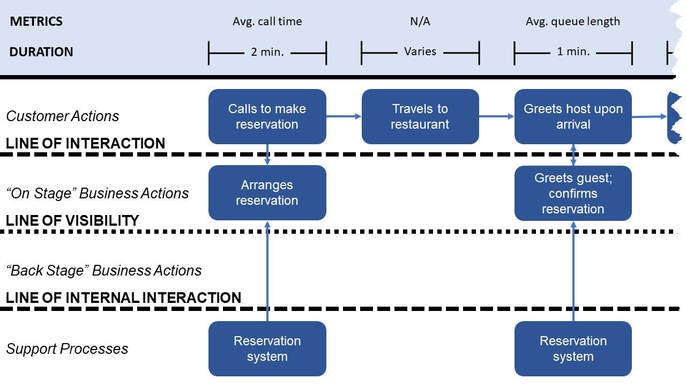|
Recently, Alec Dalton connected with Janelle Mansfield, CEO and Customer Experience Evangelist of AmplifiedCX. During his segment in her series of "60 second" soundbites for amplifying customer experiences, Alec highlighted service blueprinting as a technique CX leaders can use for understanding the operational implications of their experiences. Check out the recording below, and continue reading to learn more. As Alec shared in the video, service blueprinting is an extension of customer journey mapping. Blueprints use process flow diagramming to show the steps customers take along their journey, as well (and perhaps more importantly) the steps the business takes in parallel. The benefits of service blueprinting include:
The following screenshot shows some of the basic elements in a simplified service blueprint: Looking vertically, you can see an array of actions and lines that form the core components of a blueprint:
As the example shows, each of the actions and processes is connected with flow lines to depict the movement of tasks and effort as an experience is prepared, created, and evaluated. Additional features common on blueprints include metrics like the duration of each task, the quality of outputs, and customer satisfaction at key events. The level of depth a single blueprint provides explains why the tool is a prized addition to any CX toolkit. If you're keen to learn more, consider joining Alec's blueprinting masterclass during the E3 digital conference, hosted on Oct. 19-22, 2020 by the Customer Experience & Service Association Middle East (CXSA). You can also read "Service Blueprinting: Shifting from a Storyboard to a Scorecard", which he published in the Journal of Foodservice Business Research in collaboration with Dr. Peter Szende. Comments are closed.
|

